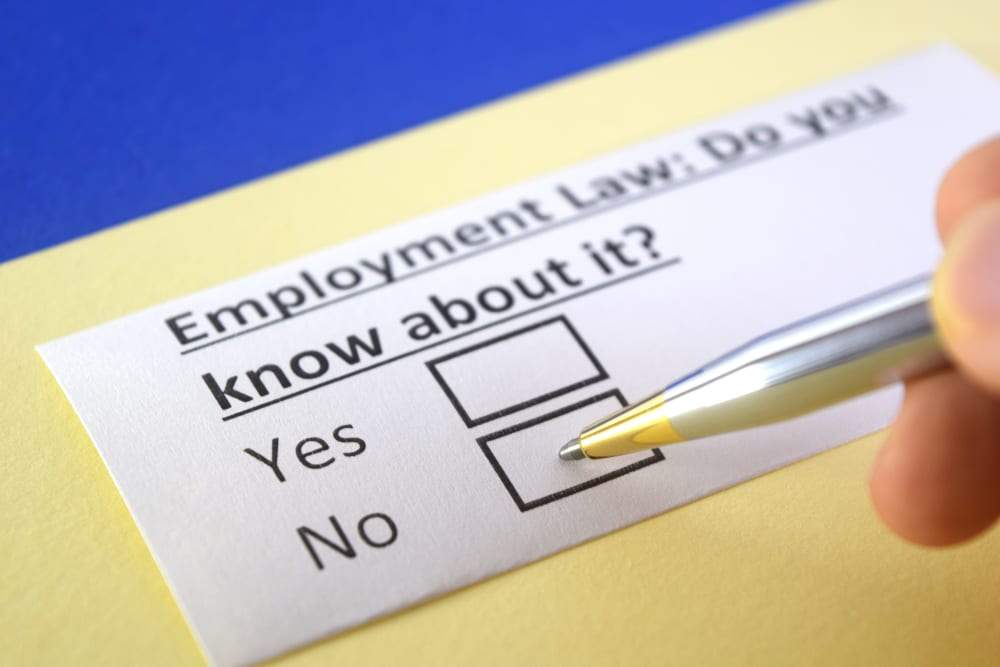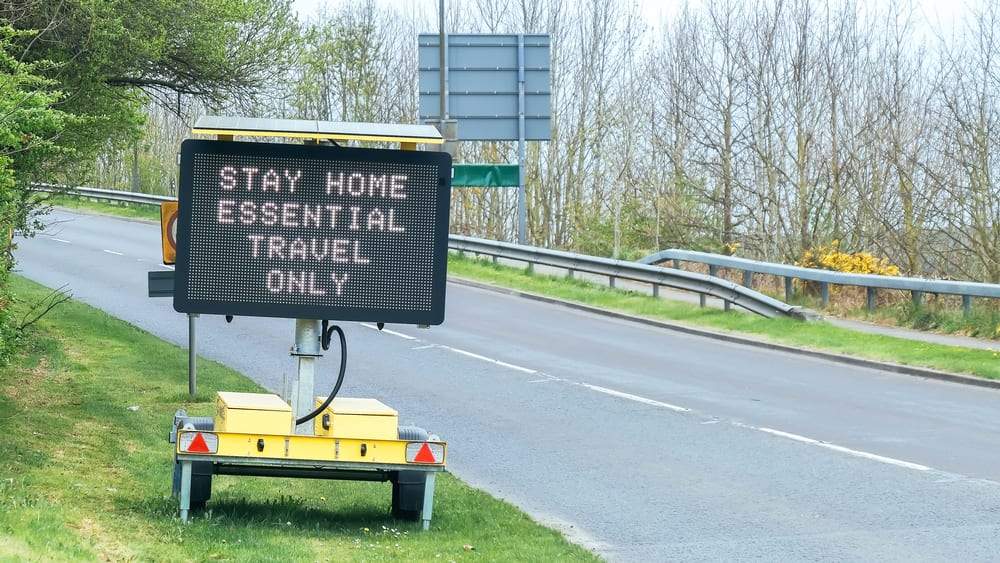As this remarkable year draws to an end, we look back at the various changes to UK employment law during 2020 and look forward to the changes to UK employment law we can expect in 2021.


Reflecting on the Events of 2020
On 23 March 2020, Prime Minister Boris Johnston announced unprecedented restrictions and a national lockdown across the United Kingdom to combat the rapid spread of COVID-19 (Coronavirus) and so began the most challenging nine months UK Employers have had to face since the outbreak of WW2.
it is impossible to understate just how difficult the last nine months have been due to the scourge that is the COVID-19 virus, but with COVID vaccines now underway throughout the UK, hopefully we have at last reached the beginning of the end of what has undoubtedly been a challenging year for us all.
Employment Law Changes in 2020
Long before COVID-19 appeared on the horizon, the mechanisms to introduce various changes to UK employment legislation were already underway and amidst the chaos of the COVID crisis, several significant changes to UK employment legislation were introduced.
Starting on 23 January 2021, when the European Union (Withdrawal Agreement) Act 2020 received Royal Assent, several more changes to UK employment laws followed, including:
- Various emergency measures were implemented as a result of the 2019 coronavirus (COVID-19) pandemic, including new rules on statutory sick pay, a relaxation of holiday carry-over rules, and a government-funded furlough scheme to prevent job losses.
- The National Minimum Wage (Amendment) Regulations 2020 increased the national living wage and national minimum wage rates.
- The Social Security Benefits Up-rating Order 2020 increased statutory sick pay, maternity pay, paternity pay, adoption pay and shared parental pay rates.
- The Employment Rights (Increase of Limits) Order 2020 (SI 2020/205) (Employment Rights Order) revised compensation limits for certain tribunal awards and other statutory payments.
- The Employment Rights (Employment Particulars and Paid Annual Leave) (Amendment) Regulations 2018 (SI 2018/1378) came into force.
- The “Swedish derogation” in the Agency Workers Regulations 2010 (which allowed employment businesses to avoid pay parity between agency workers and direct employees if certain conditions are met) was removed by the Agency Workers (Amendment) Regulations 2019 (SI 2019/724)
- Temporary work agencies must provide agency work-seekers with a Key Information document, including information on the type of contract, the minimum expected rate of pay, how they will be paid and by whom under the Conduct of Employment Agencies and Employment Businesses (Amendment) Regulations 2019 (SI 2019/725
- All workers were given the right to a written statement of terms under the Employment Rights (Miscellaneous Amendments) Regulations 2019 (SI 2019/731)
- The threshold to request an information and consultation agreement under the ICE Regulations was lowered by the Employment Rights (Miscellaneous Amendments) Regulations 2019 (SI 2019/731) (
- All termination payments above the £30,000 threshold are now subject to class 1A NICs
- The Parental Bereavement (Leave and Pay) Act 2018 took effect.
- The government issued guidance on the treatment of salaried-hours work for NMW purposes, noting that the effect of the amends to the National Minimum Wage Regulations 2015 (SI 2015/621) is to widen the range of pay arrangements that are compatible with workers being treated as performing salaried-hours work under the NMW rules.
- Temporary work agencies must provide agency workers whose existing contracts contain a Swedish derogation provision with a written statement advising that, with effect from 6 April 2020, those provisions no longer apply.
Employment Law Changes in 2021
Looking to the year ahead, it seems very likely that the COVID-19 restrictions will continue to impact us for several more months to come, but notwithstanding the impact this will continue to have, there are also a number of legislative and employment case law developments that Employers should be aware of, mainly:
1 January 2021: New UK points-based immigration system takes effect. On the 19 February 2020 the Prime Minister and Home Secretary announced that a new global points-based immigration system, applicable to all non-British and Irish nationals will apply from 1 January 2021. This will follow the end of free movement rights for EEA nationals on 31 December 2020.
4 January 2021: Court of Appeal: Community Based Care Health Ltd v Narayan. On 4 January 2021, the Court of Appeal will consider whether a GP providing services to an NHS provider through a limited company had been correctly characterised as a worker under the Employment Rights Act 1996.
15 January 2021: Consultation on proposed sentencing guidelines for offenders guilty of modern slavery offences closes. On 15 October 2020, the Sentencing Council launched a consultation on proposed sentencing guidelines for offenders guilty of modern slavery offences including slavery, servitude, compulsory labour and trafficking people for exploitation purposes.
21 January 2021: EAT: Webster and another v United States. On 21 January 2021, the EAT is set to consider whether an employment tribunal had jurisdiction to hear claims for discrimination and unfair dismissal brought by two local British civilian personnel who were employed by the US Air Force on UK RAF bases and were covered by the common law doctrine of state immunity.
1 February 2021: HMRC to start publishing details of employers’ CJRS claims. HMRC will start publishing details of employers’ CJRS claims on GOV.UK from February 2021. The published information, relating to claim periods starting on or after 1 December 2020, will include the employer name, an indication of the value of the claim within a banded range and the company number (for companies and LLPs).
26 February 2021: The government’s consultation on measures to extend the ban on exclusivity clauses in employment contracts to cover those earning under the Lower Earnings Limit will close on 26 February 2021.
26 February 2021: The government’s consultation on measures to reform post-termination non-compete clauses in employment contracts will close on 26 February 2021.
1 April 2021: Proposed date for revision of the socio-economic duty under the EqA 2010 and final statutory guidance in Wales. On 22 November 2019, the Welsh Government published a consultation on commencing the socio-economic duty under section 1 of the Equality Act 2010 (EqA 2010). The consultation closed on 17 January 2020. The duty will enter into force on 1 April 2020, with interim guidance published at the same time.
6 April 2021: Extension of off-payroll working rules to private sector: commencement. As announced in the 2018 Budget, the extension of the rules to the private sector with effect from 6 April 2021 is intended to counter non-compliance with IR35. The measure shifts the compliance burden from the worker’s personal service company to the medium and large “client” organisations that they work for.
30 April 2021: COVID-19: Coronavirus Job Retention Scheme ends. On 17 December 2020, the Chancellor announced that the Coronavirus Job Retention Scheme (CJRS) will be extended until 30 April 2021.
Summer 2021: Report of government independent review of the Human Rights Act 1998 expected to be published. On 7 December 2020, the government announced the launch of an independent review of the Human Rights Act 1998 and whether it requires reform. This runs alongside the independent review of judicial review as part of the government’s commitment to examine the constitution and relationship between the government, Parliament and the courts.
9 November 2021: Supreme Court: Harpur Trust v Brazel. On 9 November 2021, the Supreme Court is due to hear an appeal against the Court of Appeal’s decision that an employment tribunal was wrong to find that “part-year workers” (those working only part of the year) should have their annual leave entitlement capped at 12.07% of annualised hours.
2 & 3 June 2022: Bank holiday: Queen’s Platinum Jubilee. On 12 November 2020, the government announced the creation of a Platinum Jubilee bank holiday on 2 and 3 June 2022, creating a four-day bank holiday weekend.
Specialists you need. Experience you can trust.
Although our offices are currently closed for the festive period they will reopen again at 9.00am on Wednesday 6 January 2021. If you require advice on any of the issues noted above or any other employment matter, you can still book a free consultation with one of team of specialist from 6 January 2021 here – Book a Free Consultation
In the meantime, best wishes for a Happy New Year full of health, hope and happiness!
#StaySafe #HappyNewYear #ELS
 Advice on Settlement Agreements
Advice on Settlement Agreements Employment Tribunal Representation
Employment Tribunal Representation












